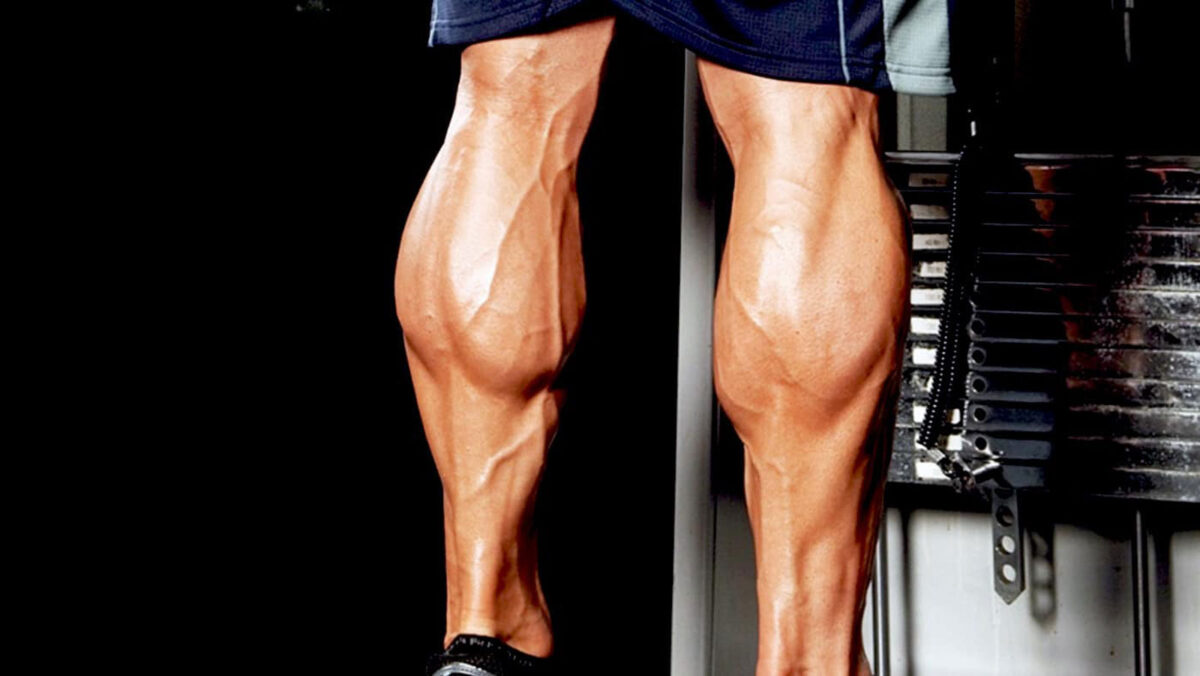The overall goal for anyone going to the gym is to increase muscle size and/or strength. But we usually do this by following a training plan that safely targets different muscle groups on different days. But one man decided to train his calves for 120 days in a row. This is what happened…
That man is Matt Morsia who has a YouTube called called ‘Matt Does Fitness.’ It does what it says on the tin: his name is Matt and he posts videos of himself completing various fitness challenges, which include eating challenges and competing against his brother to see who is the strongest.
One video follows Matt’s account of what happened when he trained his calves for 120 days straight (you can watch the full 17-minute video, here). Matt had good reason to conduct such a challenge as he ruptured his left achilles tendon whilst playing a 5-a-side football match.
WATCH: Matt’s journey of rebuilding his calf muscle for 120 days straight
After going through surgery, and having next to no strength in his left leg to the point where he could see his calf muscle “wasting away in front of my eyes,” Matt started to feel optimistic about regaining his strength.
Initially putting himself through a resistance band rehabilitation program to start rebuilding strength, and perhaps letting his ego get the better of him with his desire to prove all the experts who said it would be months before he would walk properly again, wrong, Matt started implementing some “actual calf exercises.”
These calf exercises included seated and standing calf raise variations and at 9 weeks post-surgery, Matt completed a 230kg deadlift. Matt’s ultimate goal was “to build to biggest and strongest calves the world has ever seen.”
Again, letting his ego takeover somewhat, Matt was able to raise the left heel (the damaged side) the same height of 14cm as his right heel after four months (120 days) of training. He claims his physiotherapist said off camera that he’d never seen anybody else do that before.
Matt then takes us through an example of his calf workout, which includes three calf raise variations. The first of which incorporates a series of isometric holds.
Isometric exercises, as Medical News Today says, “do not involve the muscles shortening or lengthening. During isometric exercises, the joints are still, and the muscles do not change shape or size.”
“Some isometric exercises develop tension by holding the body in a certain position, while others may involve holding weights. Holding the muscle contraction allows the muscle tissue to fill with blood and create metabolic stress on the muscle. This can help improve strength and endurance.”
It’s for this reason that Matt performs multiple isometric holds, with his feet in different positions to help target different areas of the calf muscle.
Myprotein ambassador and transformation coach Joshua Antonio Williams told DMARGE “the calf muscle consists of of two main muscles, the gastrocnemius and the soleus, which attaches to the Achilles tendon. The only way to correctly activate these muscles for muscle growth is with a movement named ‘plantar flexion’ which is where your toes point downward, away from your shin in a flex position.”
Indeed, Matt performs standing calf exercises using a smith machine, lifting up from his toes to elevate his heels, and then moving the direction in which his feet are pointing.
Matt also performs seated calf raises to help better target the soleus muscle. For these, he seats himself underneath a leg extension machine, and lifts the part you rest your feet on for a leg extension, with his knee, by elevating his heel once again.
Josh told DMARGE Matt’s calf exercises are great to perform, along with “using a calf raise machine, leg press calf raises, single leg calf raises and dumbbell calf raises.”
However, Livestrong cites Sam Chan, a physical therapist from New York as saying “standing calf raises are probably the most common calf exercise and can be one of the most ineffective, too.”
“Performing calf raises from the floor prevents your muscle from moving through its full range of motion.”
Sam Chan does agree, however, that a seated soleus press – similar to the one Matt performs using the leg extension machine – is a great calf raise variation.
DMARGE asked Josh about the standing calf raise being a safe and effective exercise, and he told us, “I believe that any exercise can cause ‘potential injury’ if the exercises are performed incorrectly or the muscle is overtrained.”
“The standing calf raise is a preferred exercise for many as it is easy to add additional weight to increase the resistance, leading to increased muscle and strength.”
Josh also told that he “personally wouldn’t recommend anyone trains the same muscle everyday for an extended amount of time. The only time that muscle cells repair themselves and growth can occur is when you rest.”
“Also, without sufficient rest your muscles will quickly become overtrained, and you increase the risk of causing further injury.”
So, while Matt did indeed regain size and strength in his calf muscle following his injury, it could be fair to say he got lucky and avoided causing any further injury to himself. If you suffer an injury that forces to take time away from the gym for an extended period of time, accept that you are going to lose muscular size and strength, and then listen to the advice provided by a health professional.
Read Next
